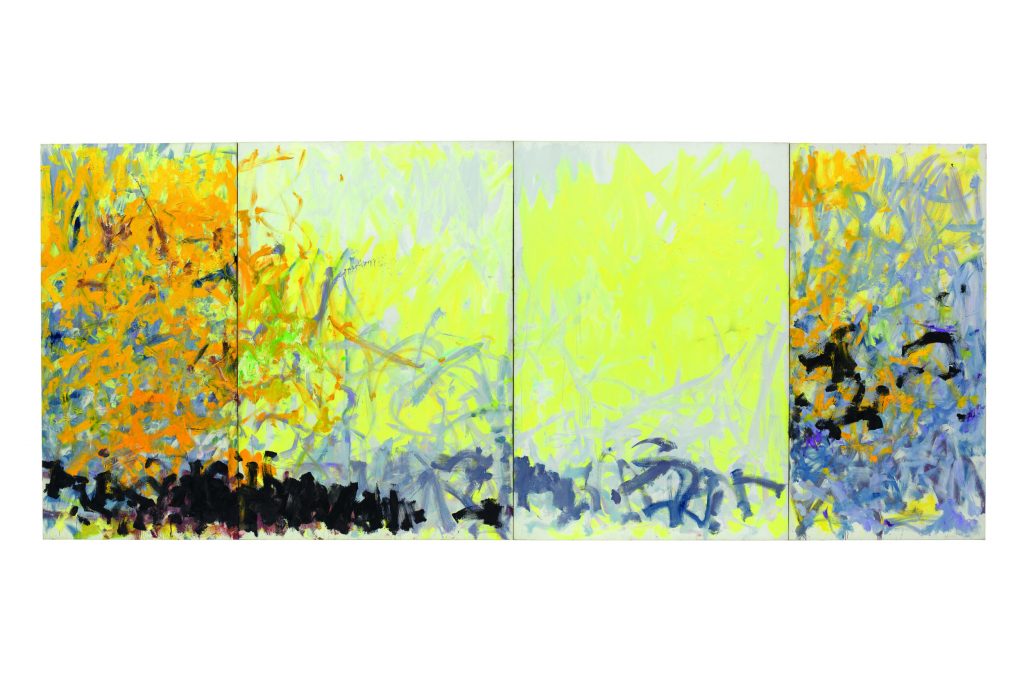Reaffirming, once again, “its desire to anchor its commitment to contemporary creation in a historical perspective,” the Fondation Louis Vuitton is offering this fall a flamboyant dialogue between the precursor of abstraction, Claude Monet (1840-1826), and one of its most dazzling exponents, Joan Mitchell, who was born in 1925 in Chicago, a year before the master Impressionist’s death, and died in 1992 in Paris.
A face-to-face confrontation between the monumental canvases of the American artist and the paintings of Monet’s last period, that of the Water Lilies, considered as the precursor of abstraction by the painters of Abstract Expressionism, which led to a veritable “Monet Revival” in the United States in the 1950s. From the fiery Garden at Giverny (1922-1926) to the blue and orange maelstrom of The Great Valley (1983), from the immense triptych of The Agapanthus – stretching over nearly 13 meters – to the imposing and bewitching Quartet II for Betsy Jolas, we see the sensations of both artists surfacing on the canvases and, in the course of intoxicating visual correspondences, the fleeting impressions retranscribed by the liberated touch (freed from contour and form) of Claude Monet become feelings in Joan Mitchell’s work… In fact, although the two artists are nearly a century apart, and although the first is affiliated with Impressionism and the second with “abstract Impressionism “1, their pictorial approach, but also their inspiration and their technique are very similar: it is the same emotion in front of the same recomposed landscape that Monet and Mitchell want to retranscribe under the assaults of their brushes.
This is clearly demonstrated by one of the works in the collection of the Fondation Louis Vuitton that we have chosen to analyze: a dazzling quadriptych, nearly 3 meters high and more than 6 meters long, soberly entitled Minnesota, painted in 1980. A flamboyant opera in which the oranges burst, the yellows resound, the blacks ring and the grays thunder in a wild and disheveled explosion of the touch…

In addition to the monumentality of the immersive format reminiscent of the series of large panels fitted together to form the immense panorama of the Water Lilies – “an endless whole, a wave without horizon and without shore” (Monet, sic) -, one sees many similarities with the strategies of absorption of the gaze implemented in these large shimmering surfaces: same exaltation of the color, same lyricism of the gesture, same way of apprehending the space of the canvas through the rhythmic of the colors, the all-over and the use of the silences and the gaps (parcels of virgin canvas), same dilution of the motive and the contours… And above all, the same conception of the work of art as a sensitive and meditative experience.
Stéphanie Dulout
